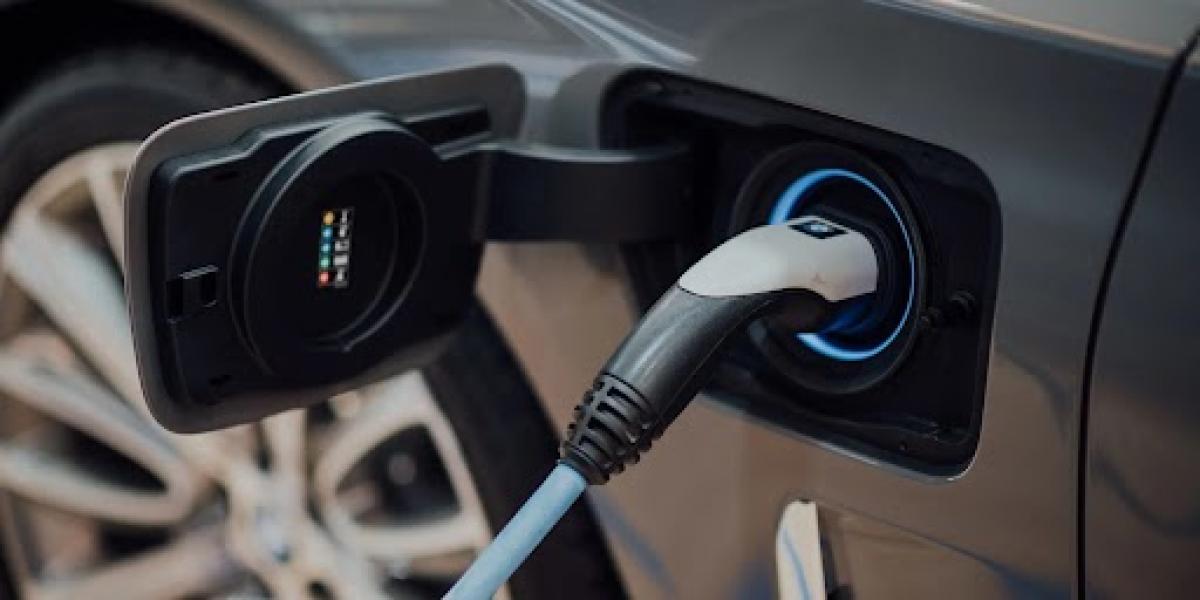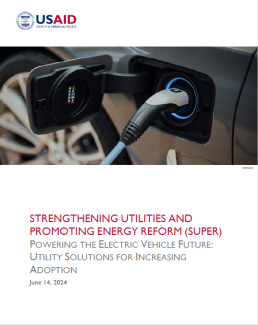Powering the Electric Vehicle Future
Strengthening Utilities and Promoting Energy Reform
REPORT – JUNE 14

The specific role(s) of a utility in a given country and jurisdiction will vary and evolve based on the specific context—which includes the state of the EV and power markets, the policy environment, the type(s) of EVs and associated charging infrastructure in use, and what goals or mandates the utility is working towards regarding EV infrastructure rollout in their service territory. As with the adoption of any new technology, utilities around the world are encountering challenges while responding to or proactively planning for EV expansion. This report is a deliverable under the United States Agency for International Development (USAID)-funded Strengthening Utilities and Promoting Energy Reform (SUPER) program,i implemented by Deloitte Consulting LLP. It presents an analysis of the key challenges utilities may face as they prepare for and respond to the growth of EVs, and evaluates potential solutions and leading practices that could be applied or adapted to jurisdictions in earlier stages of EV adoption. These include:
Given the growing interest and anticipated rapid expansion of EVs in emerging and developing economies (EMDEs), there are many opportunities for USAID and other donors to provide targeted, strategic technical assistance to utilities and governments to scale up EV deployment and contribute to the long-term electrification of the transportation sector. Utilities are a key stakeholder for EV deployment, since the grid is the lynchpin for both vehicle charging and associated infrastructure development and therefore impacts EV market expansion. Donor assistance should therefore be tailored to the current status of the EV market and to the role of the utility in the EV charging ecosystem. Table 1 details areas and opportunities where USAID and other donors could provide technical assistance, mapped to the six major challenges discussed above.
- Cost Recovery and Financing: Utilities must recover the costs of infrastructure upgrades associated with increased EV deployment from a limited number of pathways. Each of these pathways carries regulatory and equity implications. Solutions to recovering the costs include rate adjustments (including tiered or differentiated tariffs), use of public funding to support infrastructure upgrades (if available), and partnerships with the private sector to leverage additional expertise and funding sources.
- Peak Load and EV Charging Management: As the number and diversity of EVs grows, utilities may face challenges with effectively managing the additional load from EVs. Solutions include the use of time-variable pricing to encourage off-peak charging, incentives or rebates for customers who charge during off-peak hours, and collaboration with the private sector to develop such programs.
- EV Charger Grid Interconnection, Regulatory Permitting, and Stakeholder Coordination: Delays in EV charger grid interconnection approvals can add months or years to a project’s timeline and disincentivize private investment. To address this, utilities can develop a more efficient and transparent process by creating dedicated EV charger interconnection teams to review applications. Utilities can also actively engage with relevant government agencies to simplify and streamline regulatory permitting processes and lead the development of stakeholder coordination bodies.
- Long-term Planning and EV Load Forecasting: Utilities will need to forecast EV load and plan for the long-term impacts of EVs. However, utilities face challenges with collecting and analyzing the data required and often lack the technical capabilities and expertise to conduct accurate forecasts. Utilities can improve data management and collection through AMI, submetering, smart chargers, and private sector engagement. Utilities can also engage third parties to conduct long-term forecasting, as is commonly done in the United States.
- Technical Standards and Rapid Technological Evolution of EVs and Charging Infrastructure: Utilities seeking to add EV charging as a service may lack awareness of the range of technical standards that need to be considered when installing and operating charging stations. With EV and charging technologies rapidly evolving, it is difficult for utilities to fully future-proof their investments. Utilities can proactively adopt leading international technical and safety standards based on domestic EV trends and develop interoperable and universally accessible charging stations, using protocols like OCPP. Where appropriate, utilities can encourage the development of charging stations with multiple types of plug standards for maximum accessibility. Utilities should also maintain and update technical standards regularly to ensure they are adhering to the latest versions.
- Consumer Awareness and Adoption of EVs: Utilities often lack dedicated service lines and programs to support EV customers, potentially leading to negative customer experiences (e.g., if a utility-owned charger is not working and the customer is unable to contact an EV specialist at the utility to remedy the situation). Some utilities have created teams to address these issues. Additionally, in early-stage markets customers tend to have limited awareness of EVs, presenting an opportunity for utilities since they have regular communications with existing electricity customers. Utilities can conduct EV pilot programs in targeted markets (e.g., replacing government fleet vehicles with electric alternatives or partnering with a ride hailing company to electrify part of its fleet) and then expand programs based on lessons learned, create educational and outreach programs to inform customers about the benefits of EVs and utility incentive programs, and communicate EV-related information to their customer base. Utilities can provide such information with customers’ electricity bills, create dedicated email and/or mail campaigns for their customers, host EV information pages on their websites, and organize EV fairs or other events to raise awareness.
Given the growing interest and anticipated rapid expansion of EVs in emerging and developing economies (EMDEs), there are many opportunities for USAID and other donors to provide targeted, strategic technical assistance to utilities and governments to scale up EV deployment and contribute to the long-term electrification of the transportation sector. Utilities are a key stakeholder for EV deployment, since the grid is the lynchpin for both vehicle charging and associated infrastructure development and therefore impacts EV market expansion. Donor assistance should therefore be tailored to the current status of the EV market and to the role of the utility in the EV charging ecosystem.



